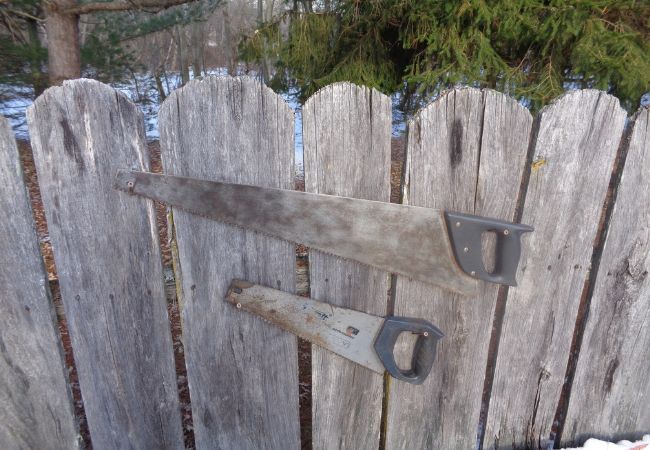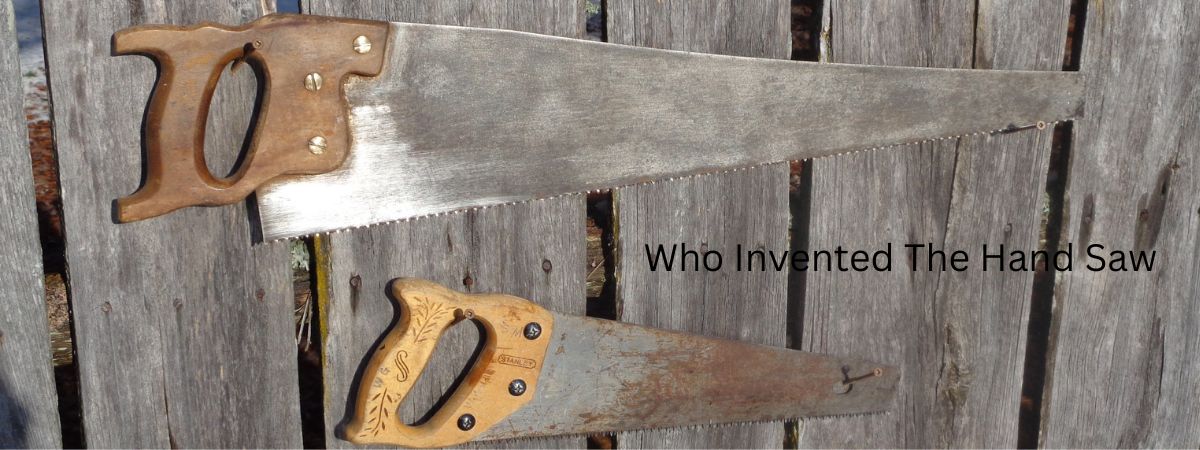The handsaw is a fundamental tool in woodworking, construction, and various DIY projects. Its invention dates back thousands of years, evolving through time and cultures. The precise origin of who invented the handsaw is somewhat challenging to pinpoint due to its long history and widespread development.
The First Saws: Crude but they worked
However, the concept of a serrated cutting tool used for woodworking likely emerged during the ancient times. Early civilizations crafted saws with crude materials such as flint, seashells, or animal bones, utilizing their jagged edges for cutting. These ancient saws were initially used for cutting softer materials like wood and bone.
Metal used for the Early Saws
As civilization progressed, metalworking techniques evolved, leading to the creation of more refined saws. The ancient Egyptians, for instance, are often credited with creating more advanced serrated saws made of bronze or copper. These early saws were probably designed with a straight blade, resembling the basic form of today’s handsaws.
Improving the Handsaw
In ancient Greece and Rome, the design of saws continued to improve. The Roman Empire, known for its advancements in various technologies, likely contributed to the refinement of saws, making them more efficient and durable. Over time, innovations in saw-tooth patterns, handle designs, and the overall structure gradually led to the creation of the handsaw we recognize today.
Saws for a Specific Need
The Middle Ages marked further advancements in saw design, particularly with the emergence of more specialized saws for various tasks. Craftsmen and tradespeople began creating saws tailored for specific purposes, such as crosscut saws, rip saws, and more.
Handsaw Production
The Industrial Revolution in the 18th and 19th centuries brought significant changes to the manufacturing of saws. The introduction of new materials and mass production techniques further enhanced the quality and availability of handsaws, making them more accessible for widespread use.
Improving the Handsaw
While the specific individual credited with inventing the handsaw remains unknown, it’s evident that its development was a culmination of contributions from various cultures and time periods. The handsaw’s evolution is a testament to human ingenuity and the continuous improvement of tools for the betterment of various trades and crafts.
The Handsaw: A tool for all Time

Today, handsaws continue to be an essential tool in woodworking, construction, and home improvement projects, showcasing a legacy that spans millennia and countless innovations. The handsaw stands as a testament to the ongoing development and refinement of tools throughout human history.
Todays Blade Materials
Most handsaws today are from wide rolled steel of a very high grade, and alloyed with other metals to give a strong and efficient blade with teeth that stay sharp for a very long time.
Handles
The handles were made of wood, with applewood being one of the preferred materials to use for handles in the early 1900s. Also today handles are often made of plastic and will give a comfortable grip when using them.
To Summarize
Handsaws have come a long way from ancient times, and are a tool you will still reach for when doing many of your home projects. As to the original inventor of the handsaw, thats still unknown.
Wishing you the best on all your home projects.
